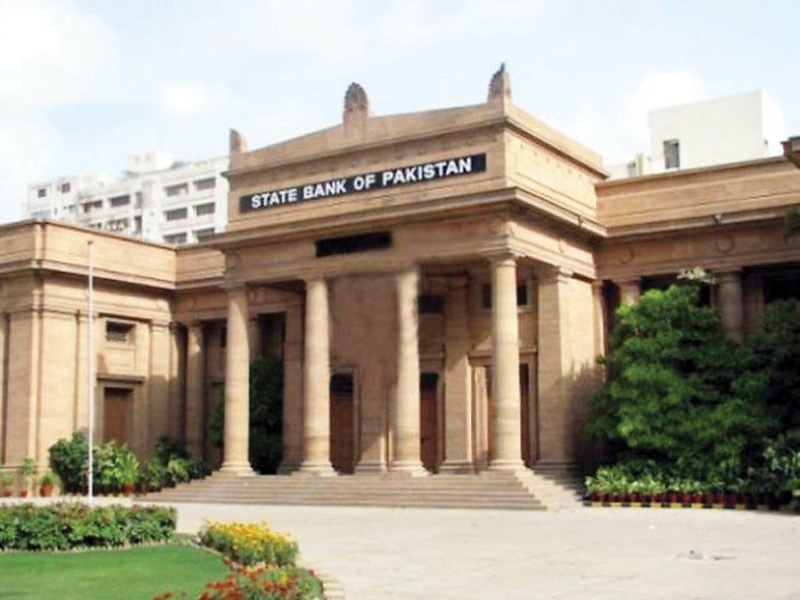
The State Bank of Pakistan (SBP) has noted that FY21 remained a particularly challenging year as the global economy adjusted to the economic and financial challenges posed by the Covid-19 pandemic, including multiple waves of virus outbreak and ensuing containment measures.
“Amid such testing times, however, the country's economy rebounded strongly compared to the previous fiscal year as well as in comparison with the targets set for FY21 at the beginning of the fiscal year,” it said in a statement.
The board of directors of the SBP also approved the annual performance review on the working of the central bank and its subsidiaries as well as the financial statements for the year ended June 30, 2021.
“The central bank's supportive monetary policy stance including quantitative measures to inject liquidity in a timely manner, supplemented by fiscal policy measures, provided a targeted, dynamic and well-coordinated policy response to Covid-19,” the statement read.
“These measures helped address the imminent liquidity and solvency concerns of businesses and households that had been emerging since the virus outbreak in March 2020 and supported the better than anticipated economic performance during the FY21.”
The economic growth rebounded to 3.94% during the year, well above the target set for the FY21 of 2.1% and Covid-19 induced contraction of 0.47% in FY20. Inflation also moderated to 8.9% in FY21 -- well within the target range of 7-9% announced by the SBP.
Similarly, other key macro-economic balances including current account, fiscal balance and the country's foreign reserves improved during the FY21.
Read SBP pumped $1.2 billion to defend rupee: WB
The SBP's quantitative measures were “well targeted, well diversified across beneficiaries and temporary in nature; and in aggregate provided liquidity support of around 5% of the GDP”.
“To ease off the challenging business environment, the central bank swiftly introduced concessional refinance schemes to prevent layoffs (Rozgar Scheme); facilitate healthcare institutions to upscale their facilities (Refinance Scheme to Combat Covid-19); and encourage firms to undertake long-term investments (under the Temporary Economic Refinance Facility).”
The SBP said export-related procedural requirements were relaxed to counter the limited mobility amidst unfolding national lockdowns and scope for concessionary Export Finance Scheme (EFS) was expanded.
In addition, the SBP allowed bank's loan restructuring and loan deferment for firms including SMEs and households.
Furthermore, the anchoring of inflation expectations, despite some upward pressures from supply management issues and surge in international commodity prices, allowed the Monetary Policy Committee (MPC) to keep the policy rate unchanged throughout the year.
“The adoption of forward guidance on monetary policy by the SBP since January 2021 played a major role in reducing short-term policy uncertainty for stakeholders.”
The central bank said the country’s external indicators also improved significantly in FY21 as the SBP's foreign exchange grew more than 40% and the country's current account deficit plummeted to a 10-year low - mainly because of record high worker's remittances and export receipts.
“While market determined exchange rate improved export competitiveness, the financial incentives announced by the SBP and the government for remittance processors under the Pakistan Remittance Initiative (PRI) encouraged the use of formal banking channels for remitting funds by immigrants, paving the way for increasing inward remittance to $29.4 billion during the year.”
With regards to payments infrastructure of the country, the SBP said it undertook major initiatives aimed at financial inclusion, digital on-boarding of customers, enabling remote banking, providing digital modes of investments to customers through banking channels and improving payment systems efficiency.
“First, the SBP in collaboration with the government and commercial banks launched Roshan Digital Account (RDA), allowing non-resident Pakistanis to open and operate bank accounts remotely with banks in Pakistan, invest in Naya Pakistan Certificates (NPCs), stock market, mutual funds, real estate and to purchase cars for their family members.”
Read more Foreign exchange: SBP reserves fall $346m to $17.1b
The initiative, the central bank added, was well received by the Pakistani diaspora as by end June 2021, $1.56 billion had been received via 181,556 RDAs.
“This influx of foreign exchange has positively supported the country's balance of payment position.”
The SBP said its second major undertaking in the payments sphere was the launch of first use case of Raast -- a state-of-the-art, interoperable and secure payment platform that enables consumers, merchants and government entities to exchange funds in a seamless, instant and cost-effective manner.
“Both the developments in the payment systems domain will have a lasting impact on the country's banking landscape as well as external account.”
Financial inclusion remained top strategic priority at the SBP, in line with the vision of National Financial Inclusion Strategy.
“During FY21, the SBP's special focus remained on rural, underserved and unbanked areas, while issuing licences for opening of new branches of commercial and microfinance banks.”
With regards to credit disbursement, the SBP said it had a renewed focus on underserved economic segments, especially housing and construction finance, agriculture finance, and finance for micro, small and medium enterprises.
Moreover, the third five-year strategic plan for the Islamic banking industry was issued by the SBP in April this year to set a strategic direction and strengthen the existing growth momentum of industry.
With respect to its regulated entities, the SBP said during FY21 implemented Risk Based Supervision Framework -- a forward-looking framework that would allow the central bank to pursue a coherent risk-based approach through proactive identification of risks, and take timely mitigation measures to ensure financial stability in the country.
To achieve its broad strategic goals and strengthen the organisational efficiency, the SBP took major initiatives during FY21 aimed at workforce rationalisation, attaining gender diversity, automation of process workflows, strengthening cyber security and risk management framework and improving transparency through enhanced communication with external stakeholders.


















COMMENTS
Comments are moderated and generally will be posted if they are on-topic and not abusive.
For more information, please see our Comments FAQ